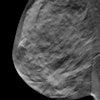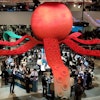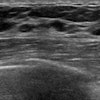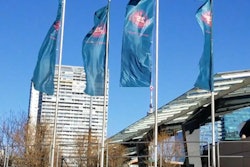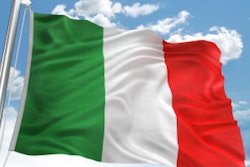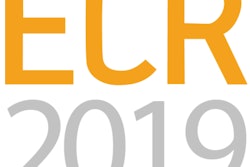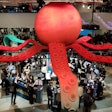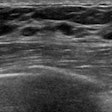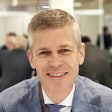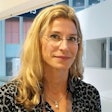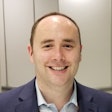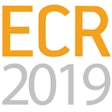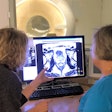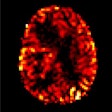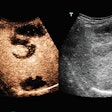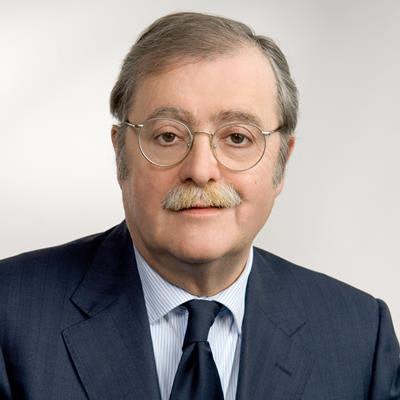
As president of the European Society of Radiology (ESR), Dr. Lorenzo Derchi will preside over next week's ECR, but what do we know about the man behind the presidential mask? What really makes him tick, and what are his views about radiology? How does he relax and unwind? Here are 10 things you probably don't know about him.
1. He works in one of Italy's largest imaging facilities.
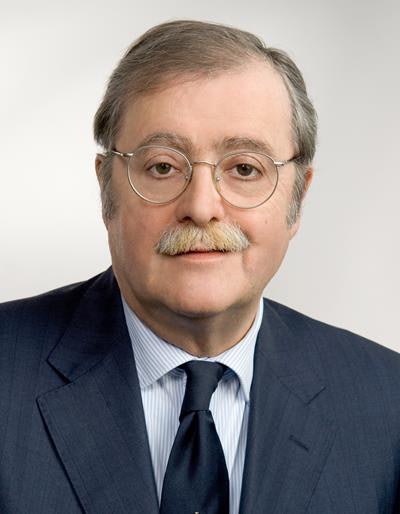 Derchi began working in diagnostic ultrasound in 1975 and in Doppler techniques in 1984. Image courtesy of the ESR.
Derchi began working in diagnostic ultrasound in 1975 and in Doppler techniques in 1984. Image courtesy of the ESR.Having graduated in medicine at the University of Genoa in 1975, Derchi has been a professor of radiology at the Faculty of Medicine there since 1994, and he was the chair of radiology of the entire hospital from January 2004 to September 2011. Since then, he has worked as the chair of emergency radiology at the same hospital.
The hospital has 1200 beds and was built around 1930. The department of radiology is divided into emergency, oncology, surgery/acute patients, medicine/chronic patients, neurology, radiotherapy, nuclear medicine, and medical physics sections.
About 230,000 examinations are conducted each year, including 42,500 ultrasound scans, 88,500 x-ray exams, 51,000 CT scans, 10,000 MRI exams, 21,000 mammograms, 3,000 angiograms, and 5,000 PET/CT exams.
2. The imaging team in Genoa consists of more than 300 people.
The radiology department is composed of around 55 physicians (radiologists, radiotherapists, and nuclear medicine specialists) and about 200 other professionals (physicists, radiographers, and administrative staff). Additionally, about 50 residents are in the residency programs in diagnostic radiology, radiotherapy, and nuclear medicine in Genoa.
3. Derchi has worked in ultrasound for 45 years.
He started working in diagnostic ultrasound in 1975 and in Doppler techniques in 1984. He has published 223 articles, including chapters in Italian and international textbooks. Most of his articles have been about the genitourinary system, particularly renal and testicular diseases.
4. He has a deep passion for music and detective stories.
Like many Italians, Derchi has music in his soul. "When I was a teenager in the 1960s, I played the guitar in a rock and roll band, and I still play and sing -- though alone now, no more in a band," he said.
 "All you need is love" was the congress anthem at the 2013 European Society of Urogenital Radiology meeting in Istanbul, where Derchi led the sing-along. Photo courtesy of Dr. Lorenzo Derchi.
"All you need is love" was the congress anthem at the 2013 European Society of Urogenital Radiology meeting in Istanbul, where Derchi led the sing-along. Photo courtesy of Dr. Lorenzo Derchi.His favorite literary character is Sherlock Holmes. "His ways of investigation and mental reasoning are quite similar to those of the diagnostician in medicine. As a matter of fact, the 'model' from whom Arthur Conan Doyle took inspiration to create the character of Sherlock Holmes was a physician: his teacher for surgery at the University of Edinburgh," he remarked.
Derchi also loves science fiction, but his greatest "hobby" is radiology. "I had the luck to enter a professional field I like very much; my profession is my hobby, and this is the luckiest situation of all," he said.
5. Love of family is important.
Family life's very important to him too. "My beloved wife too is a radiologist, and we have three children and three granddaughters who live far away from nonni (grandparents)!"
6. Derchi has attended every ECR in Vienna since 1991.
He has many memories of ECR, including a 2007 presentation he made at a postgraduate course on ultrasonography of the kidneys. The topic was "My mistakes in renal imaging," and he remembers the informal, fiery discussions on the possible causes of nephrogenic systemic fibrosis (NSF) held on one of the terraces of the Austria Center.
"In 1991, we came by car from Genoa to Vienna. We arrived on the day before the congress and left after the very last session. A "full immersion" experience!" he told ECR Today last year. "I remember that everything was within the Austria Center (both conference rooms and technical exhibition) and that the poster exhibition was on level III of the building."
He was the co-chair of the categorical course on ultrasound held at ECR 2001 and ECR 2002, the co-chair of the hands-on workshops on musculoskeletal ultrasound held at ECR in the following four years, and the chairman of the categorical course in urogenital radiology held at ECR 2012 and ECR 2013. He was the chair of the Working Group on Ultrasound of the ESR from 2009 to 2015 and a member of ESR's Executive Council from 2011 to 2016.
 The ECR 2019 poster. Image courtesy of the ESR.
The ECR 2019 poster. Image courtesy of the ESR.7. He chose the aquatic theme for the ECR 2019 poster.
Genoa is on the Mediterranean Sea and has one of the largest aquariums in Europe, so choosing deep blue as the background, with a number of fish swimming in it, was an easy choice for Derchi. "But, if you look in more detail, you can see that each fish has been designed with the colors of one of the posters of the past ECRs and that they, together, delineate the number 25," he said.
Furthermore, the number 25 at the top of the poster and the logo surrounding it are written in the same font used for the ECR posters of the early years. These details provide a link to the past and underline that the 2019 congress is carrying on along the same lines as earlier ones, emphasizing the concept of continuity of ESR's activities over time and over presidencies, he explained.
8. Derchi's top place to visit in Vienna is the Belvedere Museum.
Derchi adores the Belvedere Museum and its Gustav Klimt exhibition, and he also remembers going to two magnificent concerts at the Musikverein: "Passio Secundum Matthaeum" ("St. Matthew Passion") by Johann Sebastian Bach and a performance by pianist Katia Labèque and violinist Viktoria Mullova.
9. He has developed links with Asia, particularly Pakistan.
Along with Italy and the continent of Africa, the focus at ECR 2019 will be on Pakistan. "I have come to know many colleagues from Pakistan here at ECR during the past years, and close relationships between the Radiological Society of Pakistan and our society have been created over time. Furthermore, I was at their national congress in 2017 and met a well-organized society with which it is a pleasure to cooperate," Derchi noted. "Pakistani colleagues are planning a session dedicated to some of the most important pathological conditions encountered in their country."
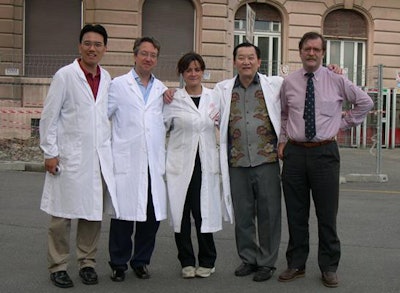 In 2006, visitors from Asia came to study muskuloskeletal ultrasound in Genoa. Photo courtesy of Dr. Lorenzo Derchi.
In 2006, visitors from Asia came to study muskuloskeletal ultrasound in Genoa. Photo courtesy of Dr. Lorenzo Derchi.10. He has a strong desire for an intellectual challenge.
Derchi was attracted by radiology because of the "intellectual challenge" of making a diagnosis from imaging findings -- to recognize them, understand if they are related to the symptoms and signs of the patient, put them together, and see if they fit into the clinical picture and can explain it. "Maybe there is a relation to my love for detective stories," he said.
In Genoa, Derchi promotes radiology to undergraduate medical students in a similar way. The last lesson of the year is structured like a film interpretation session and shows how the reasoning of the radiologist works while confronted with a series of cases.
